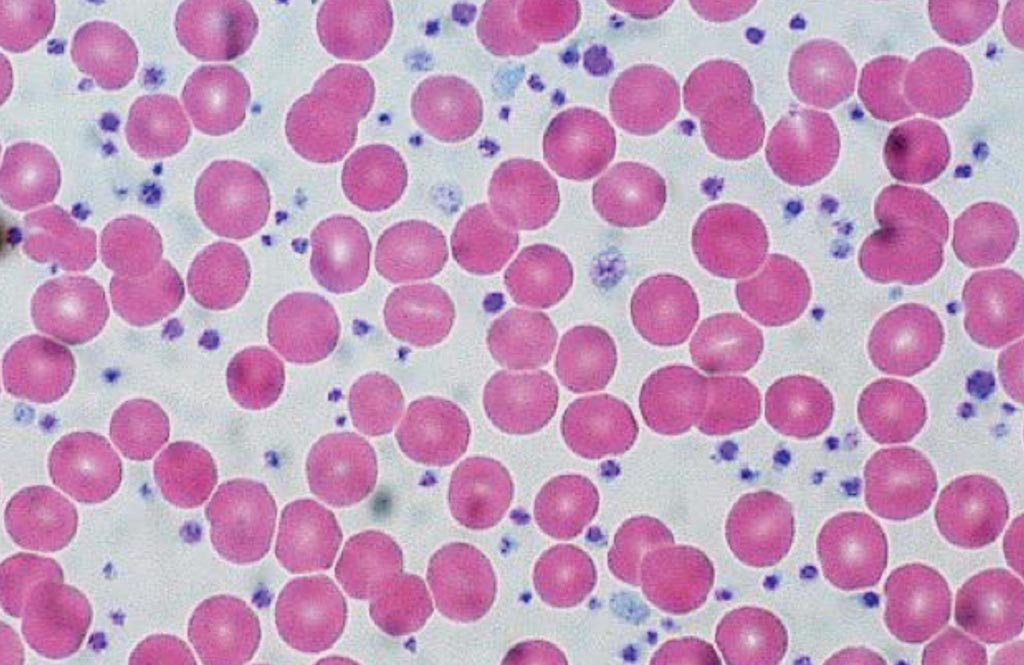Increased Immune Reaction Associated with Myeloproliferative Neoplasia
By LabMedica International staff writers
Posted on 03 Mar 2017
Patients afflicted by myeloproliferative neoplasia, which are a group of chronic malignant bone marrow diseases, bear a mutation in their hematopoietic stem cells. The mutation leads to the bone marrow producing too many blood cells, which thickens the blood.Posted on 03 Mar 2017
It has recently discovered that certain cells of the immune system also bear this mutation in those patients that possess a particularly large number of altered stem cells. The impact of this scenario on the defense against pathogens has been investigated.

Image: Blood smear of a myeloproliferative neoplasia patient with a significant increase in the number of platelets (purple) as compared to the clearly larger red blood cells (Photo courtesy of Ed Uthman).
Scientists at Helmholtz Centre for Infection Research investigated patients with different severities of myeloproliferative neoplasia. The bone marrow harbors the hematopoietic stem cells that produce the various types of red and white blood cells and platelets. They are induced to do so by messenger substances that bind to them and trigger a reaction chain, in which many different components partake. In a rare malignant group of blood diseases called myeloproliferative neoplasia (MPN), most of the patients have hematopoietic stem cells that bear an error in their genetic material, known as a mutation.
The mutation usually resides in a certain component of the reaction chain called Janus kinase 2 (JAK2) and causes the signal for haematopoiesis to be permanently switched on in the stem cells. Depending on which type of stem cell is afflicted, the bone marrow of the patients produces the corresponding blood cells and the blood becomes too thick and may clog the vessels. MPN patients usually are treated with an inhibitor of JAK2 that suppresses the continuous signal triggering hematopoiesis. However, this also weakens the immune cells such that the patients become more susceptible to infections.
The scientists found that 60% of the patients, who have a particularly large number of damaged stem cells, bear the mutation in their so-called T cells as well. These cells of the immune system specifically fight against pathogens that entered the body. The scientists then infected mice with Listeria monocytogenes. Listeria bacteria colonize food items and can cause severe infections in humans including meningitis. When the scientists investigated the mice, they found: seven days after the infection with Listeria, the mice with the mutated T cells had 100-fold lower levels of bacteria in their spleen than the control mice. They had formed clearly more specific T cells directed against Listeria and were thus able to control the infection better than the control animals without a mutation in T cells.
Dirk Schlüter, MD, a professor and senior author of the study said, “It was previously unknown that so many MPN patients bear the mutation in their T cells as well. In order to find out what this actually means for the patients, we combined the clinical studies with studies on mice.” The study was published on January 11, 2017, in the journal Leukemia.




 assay.jpg)








